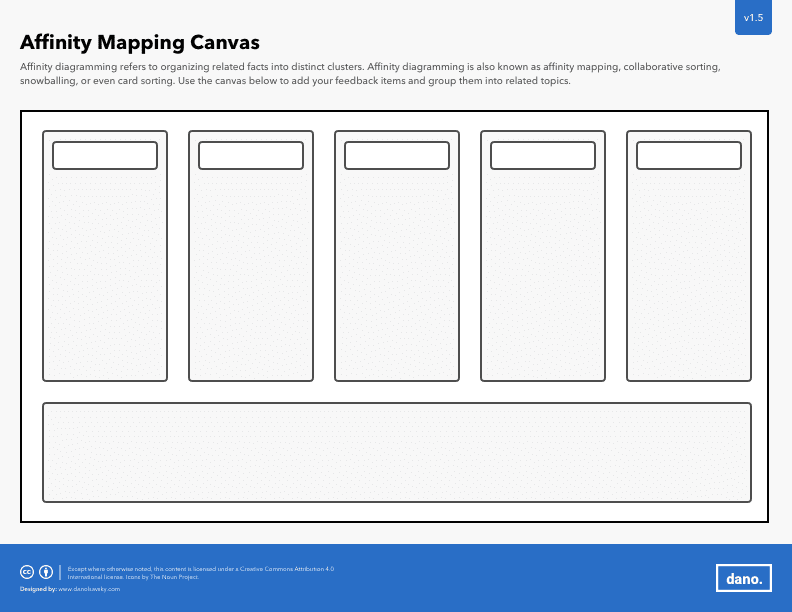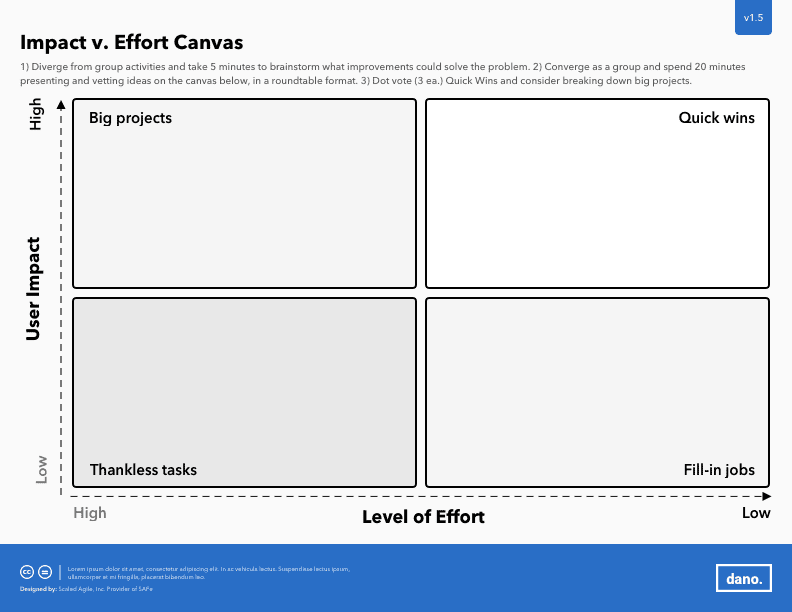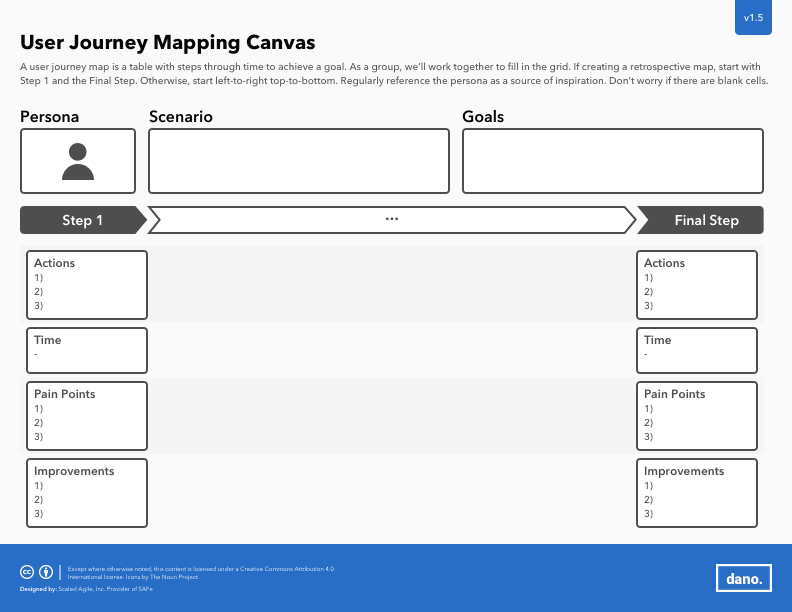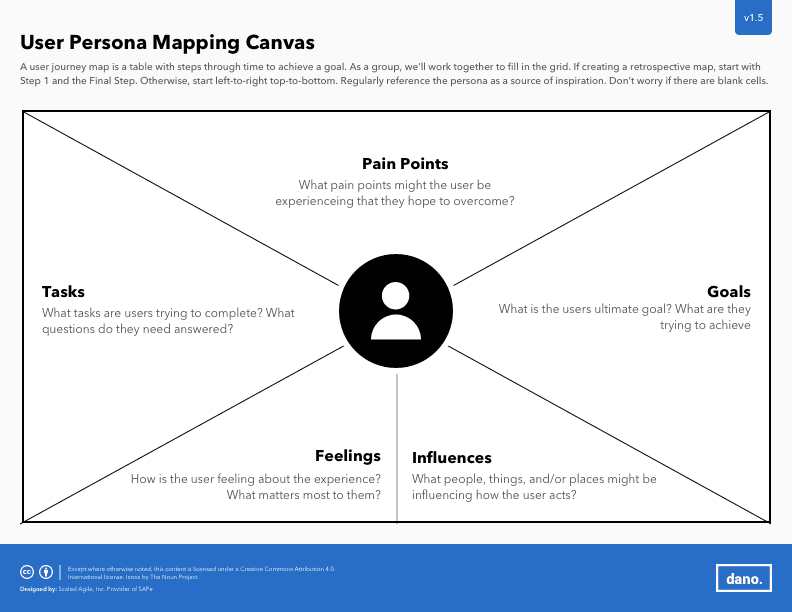Affinity Mapping Canvas
Design Thinking Toolkit Series | August 6th, 2019

Affinity mapping is a brainstorming and ideation technique used to organize and categorize a large number of ideas, observations, or inputs into groups or themes. The goal of affinity mapping is to identify patterns, connections, and relationships among ideas, and to categorize them in a way that makes sense and is easy to understand.
The process of affinity mapping typically involves writing down all of the ideas or inputs on sticky notes or index cards, and then grouping the notes into related categories. This process can be done in a group setting, with participants working together to categorize the ideas, or it can be done individually, with each participant categorizing their own ideas.
Once the ideas have been grouped into categories, the categories can be refined and consolidated until a clear and concise set of themes emerges. These themes can then be used to inform decision making, prioritize initiatives, or drive further ideation and brainstorming.
Affinity mapping is a useful tool for individuals and teams who need to process and make sense of a large amount of information, ideas, or inputs in a short amount of time. It is also useful for facilitating group discussions and aligning stakeholders around common themes and priorities.


